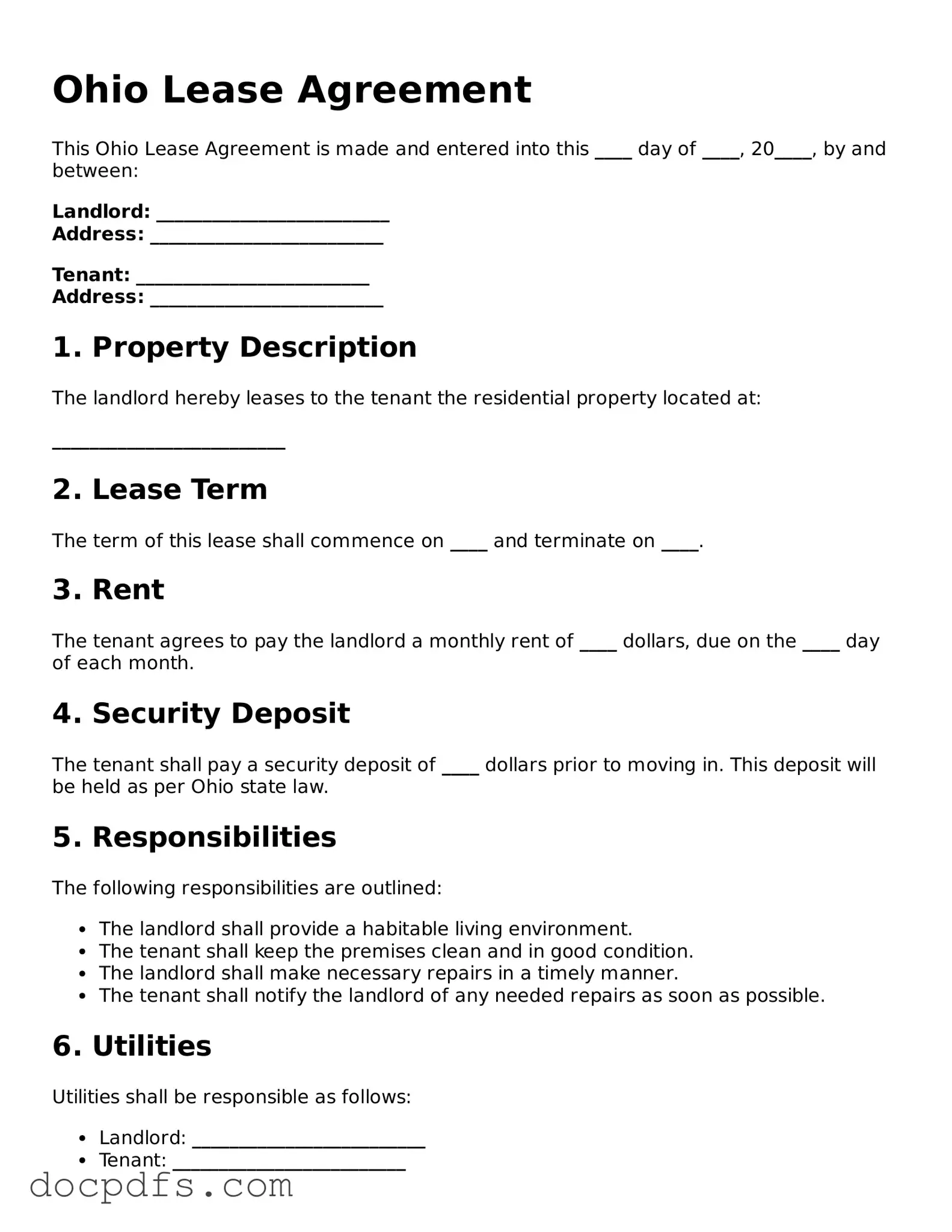What is an Ohio Lease Agreement?
An Ohio Lease Agreement is a legal document that outlines the terms and conditions between a landlord and tenant for renting residential or commercial property in Ohio. It specifies the rights and responsibilities of both parties, ensuring clarity and protection throughout the lease period.
What should be included in an Ohio Lease Agreement?
A comprehensive Ohio Lease Agreement typically includes:
-
The names of the landlord and tenant.
-
A detailed description of the rental property.
-
The lease term (start and end dates).
-
The amount of rent and payment due dates.
-
Security deposit details.
-
Maintenance responsibilities.
-
Rules regarding pets, smoking, and alterations.
-
Termination and renewal terms.
How long is a standard lease term in Ohio?
In Ohio, lease terms can vary widely. Most residential leases are typically for one year, but they can also be month-to-month or for shorter or longer periods. It’s important for both parties to agree on the lease duration before signing.
Is a security deposit required in Ohio?
Yes, landlords in Ohio may require a security deposit. The amount is often equivalent to one month's rent but can vary. Ohio law does not limit the amount a landlord can charge, but it does require landlords to return the deposit within 30 days after the lease ends, minus any deductions for damages or unpaid rent.
Can a landlord enter the rental property without notice?
In Ohio, landlords must provide reasonable notice before entering a tenant's property, typically 24 hours. Exceptions exist for emergencies, where immediate entry may be necessary to protect life or property.
What happens if a tenant wants to break the lease early?
If a tenant wishes to break the lease early, they should first review the lease agreement for any early termination clauses. Generally, tenants may be responsible for paying rent until a new tenant is found or until the lease term expires. Open communication with the landlord can sometimes lead to a mutual agreement.
Are verbal agreements enforceable in Ohio?
While verbal agreements can be enforceable, they are difficult to prove. It is always best to have a written lease agreement that clearly outlines the terms to avoid misunderstandings and disputes.
What are the tenant's rights in Ohio?
Tenants in Ohio have several rights, including:
-
The right to a habitable living environment.
-
The right to privacy.
-
The right to receive proper notice before eviction.
-
The right to return of the security deposit.
What should a tenant do if they face eviction?
If facing eviction, tenants should first review the eviction notice for details. They have the right to contest the eviction in court. Seeking legal advice can provide guidance on the best course of action and help protect their rights.
Ohio Lease Agreement forms can be obtained from various sources, including online legal services, local real estate offices, or legal aid organizations. It is crucial to ensure that any form used complies with Ohio laws and meets the specific needs of both parties.
